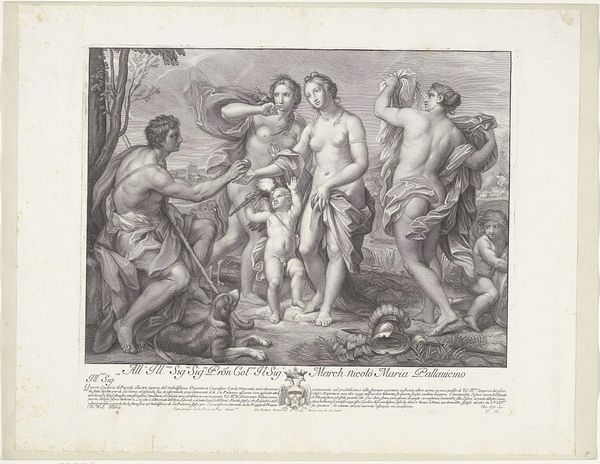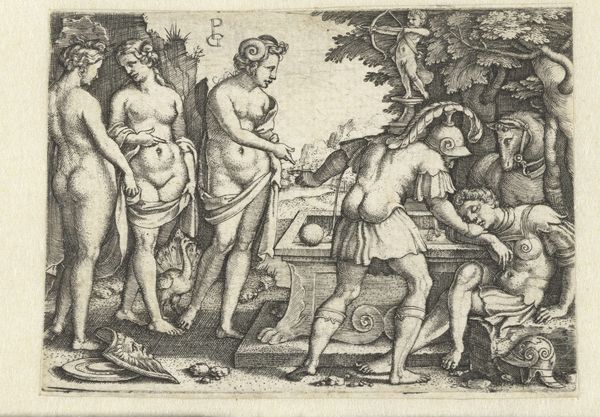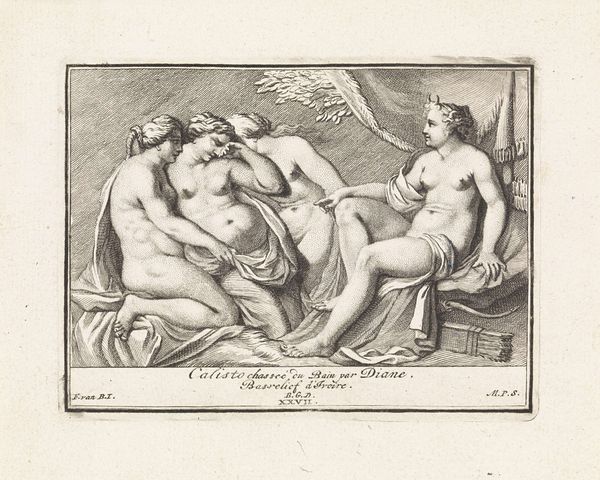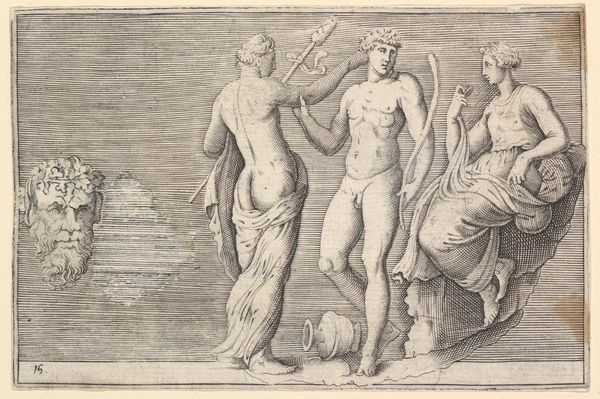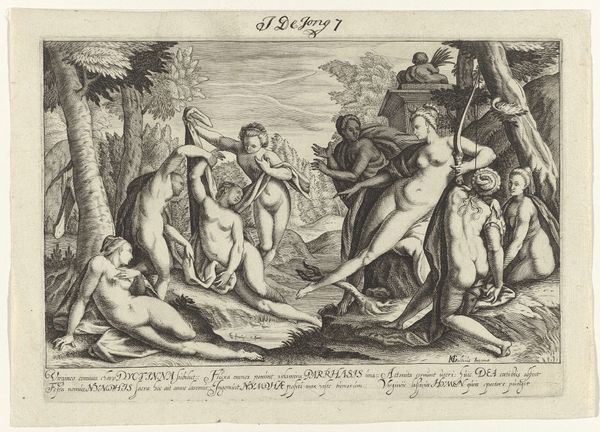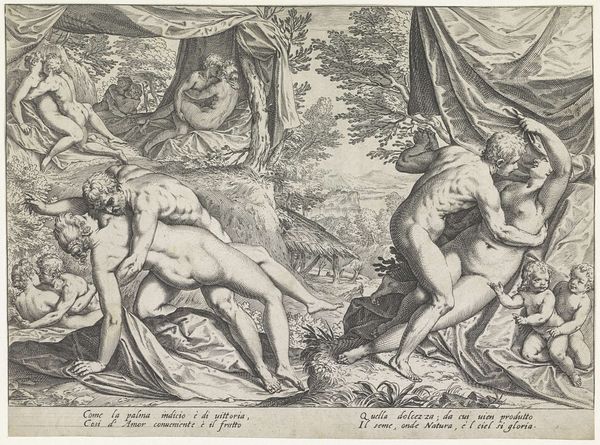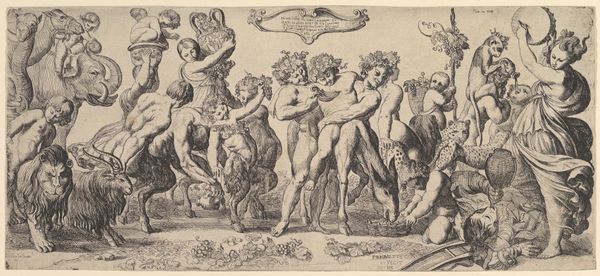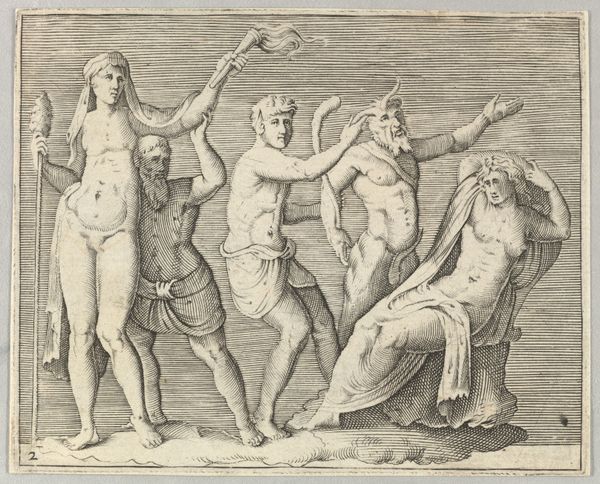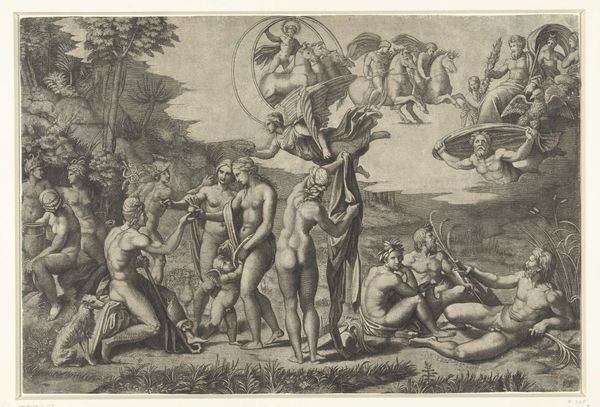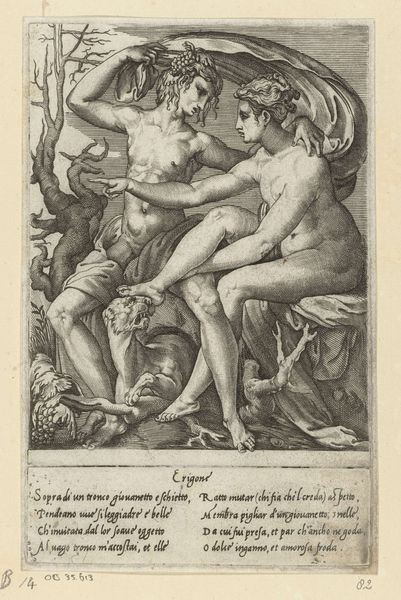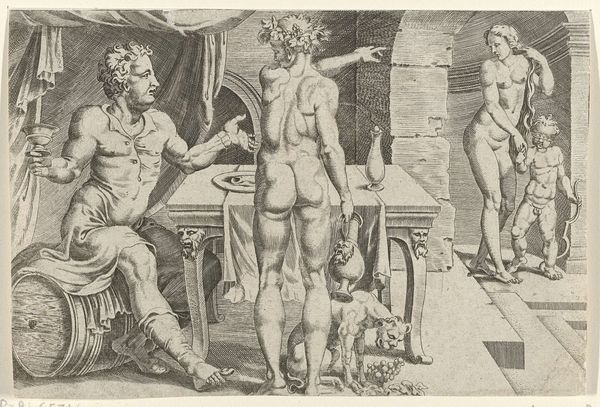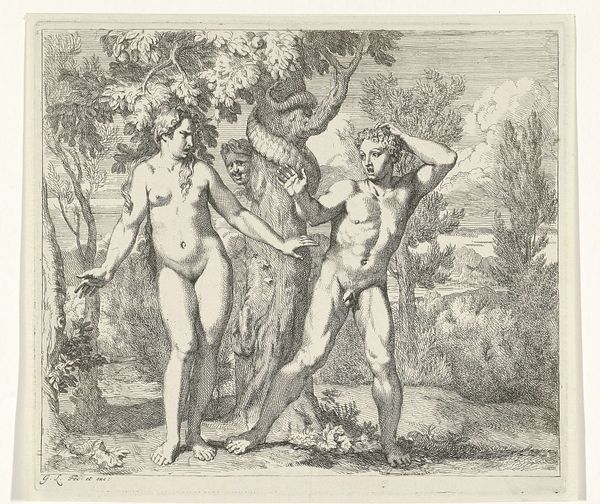
print, intaglio, engraving
#
portrait
#
allegory
# print
#
intaglio
#
old engraving style
#
classical-realism
#
mannerism
#
figuration
#
form
#
history-painting
#
nude
#
engraving
Dimensions: height 215 mm, width 265 mm
Copyright: Rijks Museum: Open Domain
Editor: So this is "The Judgement of Paris", an engraving by Pieter de Jode I, dating roughly between 1590 and 1632. I find it quite striking – it's all stark lines and dramatic poses. What's your take on this from a historical point of view? Curator: Well, the immediate visual cues like the Mannerist style, with those elongated figures and artificial poses, give us a sense of the artistic trends. However, I’m most interested in what this scene, popular at the time, tells us about the patrons and viewers. What societal role does displaying such imagery serve? Does the overt display of the nude form reinforce or challenge cultural norms? Editor: That’s a good point. I was so focused on the aesthetic choices, I didn't consider the context of who was consuming this image and why. Do you think this was a common theme at the time? Curator: Absolutely. The Judgement of Paris was a frequently depicted subject. It speaks to larger power dynamics and ideas about beauty that were being circulated. These visual narratives were crucial in shaping collective understanding, and even justifying, social hierarchies. Consider who had access to prints like this and how it solidified a certain class perspective through exposure to classical ideals. Editor: It's fascinating to think about how art could reinforce social standing. I guess the choice of the engraver – Pieter de Jode I – plays a part too. He’s a known name. Curator: Exactly! The artist's reputation adds to the value and reception of the print. These choices by patrons communicate sophistication and erudition. Editor: It’s like every element is carefully chosen for its message. It really brings a new perspective to something I initially saw as purely aesthetic. Curator: Indeed. By analyzing the artwork's production, distribution, and reception, we begin to grasp its historical importance beyond mere artistic expression. Editor: I’ll definitely be paying more attention to the socio-political undercurrents next time I’m looking at older pieces! Curator: Excellent! Remember, every artwork is both a product and a reflection of its time.
Comments
No comments
Be the first to comment and join the conversation on the ultimate creative platform.

